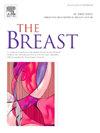Early prediction of menopausal status after chemotherapy in women with early breast cancer in order to optimize adjuvant endocrine therapy
IF 7.9
2区 医学
Q1 OBSTETRICS & GYNECOLOGY
引用次数: 0
Abstract
Background
Optimal endocrine therapy for premenopausal breast cancer patients after chemotherapy requires accurate menopausal status assessment. Current methods for determining resumption of ovarian function after chemotherapy are suboptimal. This study aims to evaluate the predictive value of pretreatment anti-Müllerian hormone (AMH) serum levels for predicting resumption of ovarian function after chemotherapy (CT).
Methods
This prospective study included premenopausal women with hormone receptor-positive breast cancer undergoing CT. AMH was measured using the picoAMH assay of Anshlabs. The primary outcome was resumption of ovarian function, defined as menstrual cycle resumption or estradiol levels above 110 pmol/L within 24 months after CT.
Results
Among 109 patients, pretreatment AMH was a strong predictor of resumption of ovarian function (AUC 0.86) and an optimal cut-off of 0.62 μg/L was calculated. AMH >0.62 μg/L identified women at higher risk for ovarian function resumption (sensitivity 69.9 %, specificity 88.5 %), with a false negative rate of 11.5 % and false positive rate of 30.1 %. Combining AMH and age improved predictive accuracy only slightly. No additional predictors were identified. Survival analysis confirmed that women with low pretreatment AMH (<0.62 μg/L) or older age (>40.2 years) experienced significantly less frequent and delayed ovarian function resumption.
Conclusion
Pretreatment AMH is a valuable tool for predicting ovarian function resumption after chemotherapy in breast cancer patients, so that a GnRH agonist can be recommended appropriately. However, the predictive value of pretreatment AMH for permanent ovarian insufficiency is too limited to determine the postmenopausal status sufficiently accurately to switch upfront to another endocrine treatment, the aromatase inhibitors.
早期乳腺癌患者化疗后绝经状态的早期预测,以优化辅助内分泌治疗
背景绝经前乳腺癌患者化疗后的最佳内分泌治疗需要准确的绝经状态评估。目前用于确定化疗后卵巢功能恢复的方法并不理想。本研究旨在评价预处理抗勒氏激素(AMH)血清水平对化疗(CT)后卵巢功能恢复的预测价值。方法本前瞻性研究纳入绝经前激素受体阳性乳腺癌患者行CT检查。AMH的测定采用Anshlabs的picoAMH法。主要终点是卵巢功能恢复,定义为月经周期恢复或雌二醇水平在CT后24个月内高于110 pmol/L。结果109例患者中,预处理AMH是卵巢功能恢复的重要预测因子(AUC为0.86),最佳临界值为0.62 μg/L。AMH = 0.62 μg/L提示卵巢功能恢复高危女性(敏感性69.9%,特异性88.5%),假阴性率11.5%,假阳性率30.1%。结合AMH和年龄只略微提高了预测的准确性。未发现其他预测因素。生存分析证实,预处理AMH低(0.62 μg/L)或年龄较大(40.2岁)的女性卵巢功能恢复频率和延迟明显减少。结论预处理AMH是预测乳腺癌患者化疗后卵巢功能恢复的重要工具,可据此推荐GnRH激动剂。然而,预处理AMH对永久性卵巢功能不全的预测价值太有限,无法足够准确地确定绝经后的状态,从而提前切换到另一种内分泌治疗,芳香化酶抑制剂。
本文章由计算机程序翻译,如有差异,请以英文原文为准。
求助全文
约1分钟内获得全文
求助全文
来源期刊

Breast
医学-妇产科学
CiteScore
8.70
自引率
2.60%
发文量
165
审稿时长
59 days
期刊介绍:
The Breast is an international, multidisciplinary journal for researchers and clinicians, which focuses on translational and clinical research for the advancement of breast cancer prevention, diagnosis and treatment of all stages.
 求助内容:
求助内容: 应助结果提醒方式:
应助结果提醒方式:


